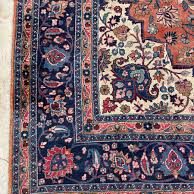
The world of Tabriz Persian rugs
Tabriz Persian rugs are a testament to the artistry and craftsmanship that have been nurtured for centuries in the city of Tabriz, Iran. These exquisite rugs are celebrated for their intricate designs, vibrant colors, and cultural significance. Let's delve into the world of Tabriz Persian rugs and discover what makes them extraordinary.
The Rich Heritage of Tabriz
For centuries, the city of Tabriz has been a hub of Persian rug weaving. It's a place where the tradition of rug making has been passed down through generations. Tabriz, located in northwestern Iran, has a rich cultural heritage that is intricately woven into the rugs produced here.
Tabriz Rugs Intricate Designs and Patterns
One of the hallmarks of Tabriz Persian rugs is their intricate designs and patterns. These rugs often feature central medallions, floral motifs, and intricate borders. The level of detail in Tabriz rugs is awe-inspiring, and it reflects the skill and dedication of the weavers.
Understanding Tabriz Rug Varieties
Tabriz rugs come in various styles and designs. Some of the popular Tabriz rug varieties include:
- Traditional Tabriz Rugs: These rugs typically feature intricate medallions and traditional Persian motifs. They are known for their timeless elegance.
- Tabriz Mahi Rugs: "Mahi" means fish in Persian, and these rugs are characterized by their fish-shaped patterns. They are a unique and cherished style of Tabriz rugs.
- Tabriz Silk Rugs: Some Tabriz rugs are crafted using silk threads, creating a luxurious and lustrous appearance. These rugs are highly sought after for their fine craftsmanship.
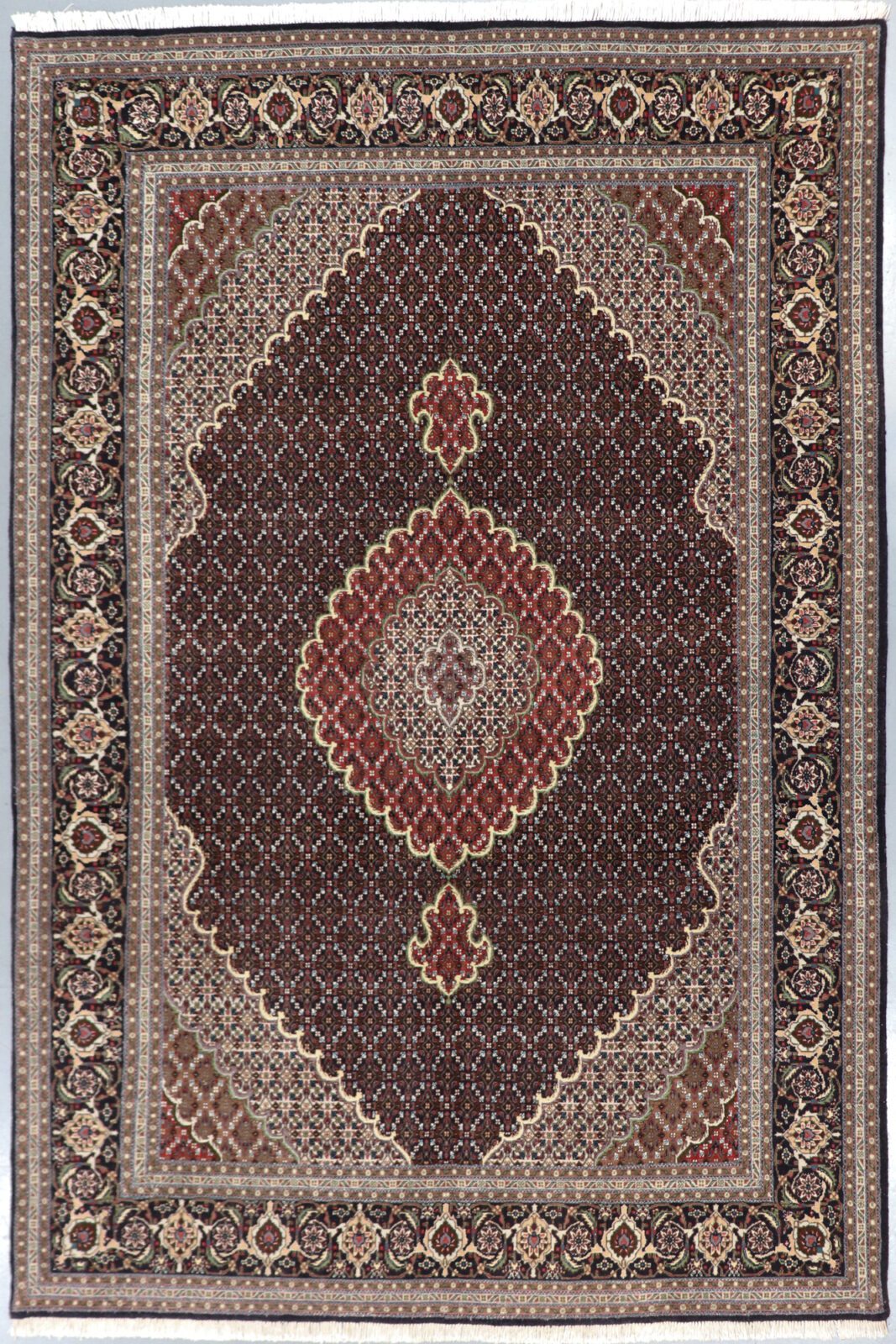
Joe Rugs - Carpet Expert
Hello! I'm Joseph Rugs, the founder of CarpetJoe.com and your guide through the intricate world of carpets. Born and raised in London with a deep-rooted passion for art and culture, I've explored the globe to bring the rich tapestry of carpet weaving right to your screen. My academic background in arts and humanities from Oxford has fuelled my curiosity, leading me to uncover the stories behind every knot and weave. As a family man, my adventures are shared with my loved ones, enriching our lives with every piece of art we encounter. Join me as we explore the beauty and craftsmanship of carpets together.
Identifying a Tabriz Persian Rug
Key Characteristics to Look For
Identifying a Tabriz Persian rug can be a rewarding experience. Here are some key characteristics to help you recognize an authentic Tabriz rug:
- Intricate Central Medallion: Most Tabriz rugs have a central medallion that is beautifully detailed and often the focal point of the design.
- Elaborate Borders: Tabriz rugs are known for their intricate borders with a variety of motifs, including floral patterns and geometric designs.
- Fine Knotting: These rugs are finely woven with a high knot count, resulting in detailed and precise patterns.
- Rich Colour Palette: Tabriz rugs often feature rich and vibrant colours, including deep reds, blues, and golds.
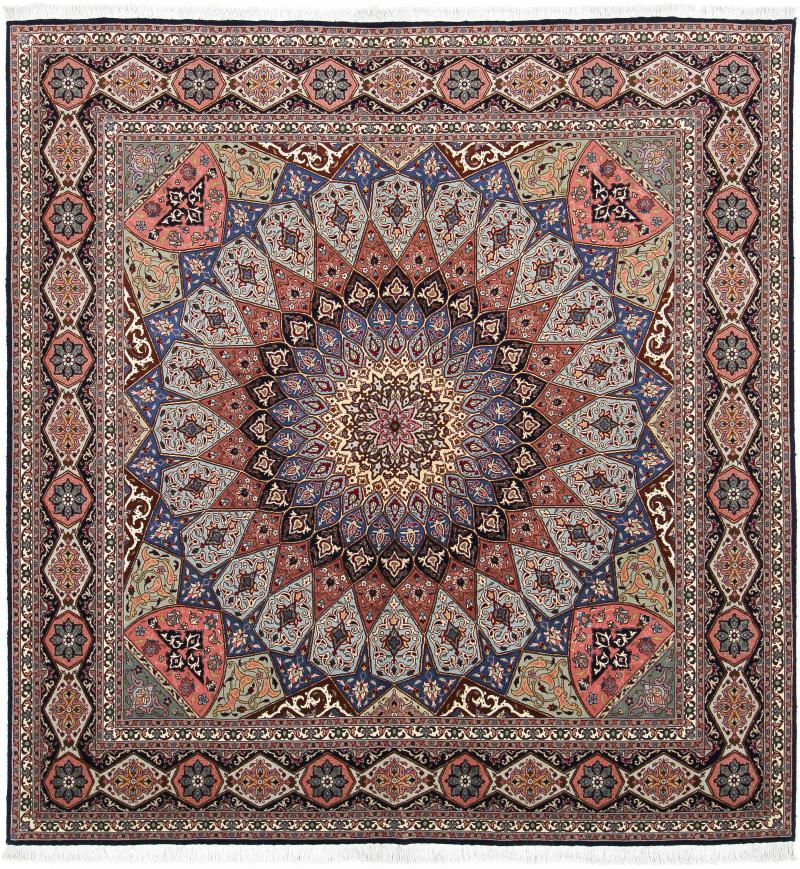
Common Types or Rugs
Each type of Oriental rug has its unique charm and story, making them more than just a luxury item; they are a piece of their country's cultural legacy. Collectors and enthusiasts of Oriental and Persian rugs appreciate them not only for their aesthetic appeal but also for their cultural, historical, and artistic significance.
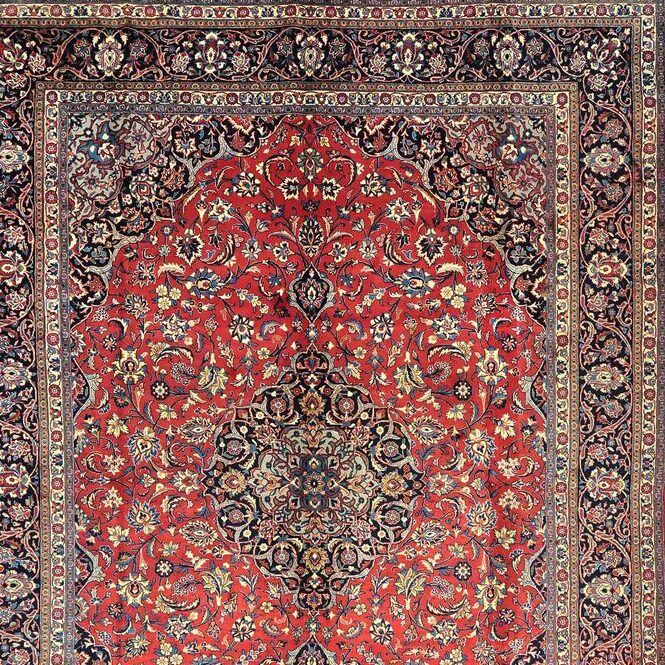
Persian Rugs
Originating from what is now modern-day Iran, Persian rugs are celebrated for their unparalleled craftsmanship and enduring beauty.
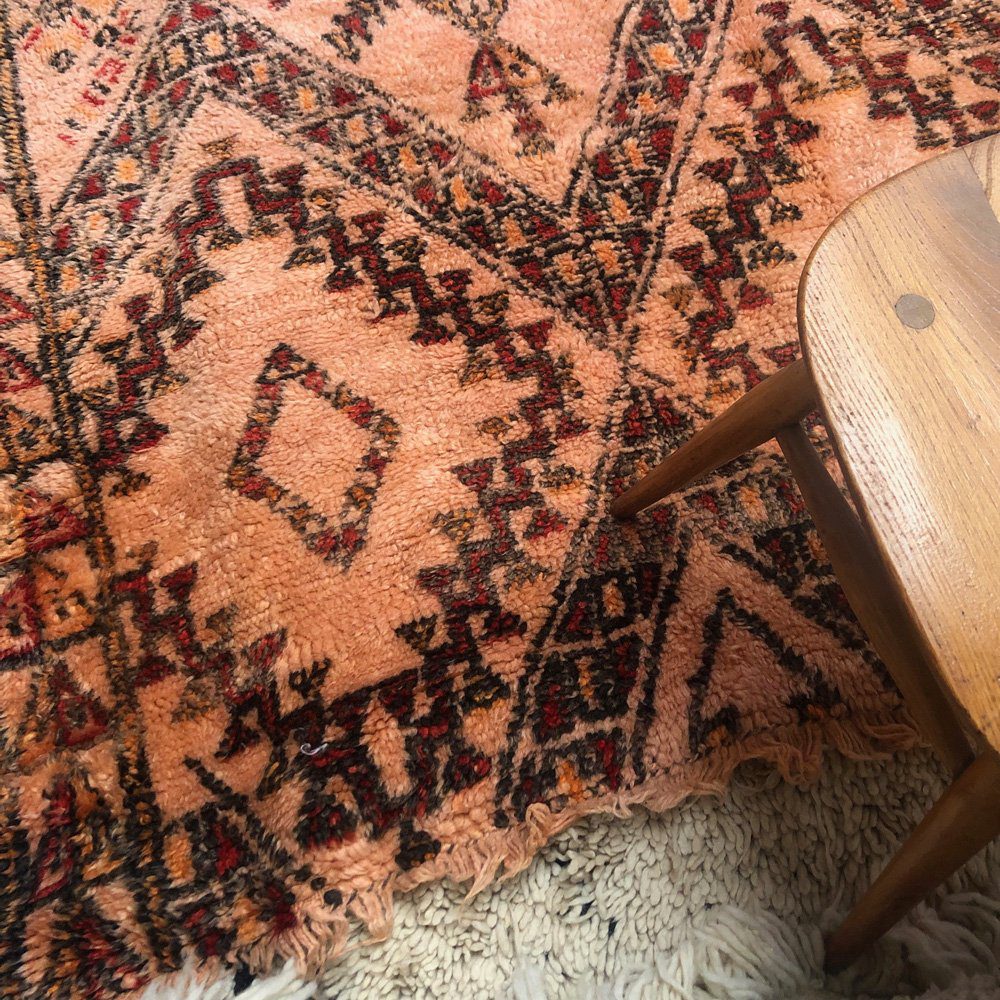
Berber Rugs
Originating from the Berber tribes of North Africa, particularly Morocco, this type of carpet is renowned for its rugged texture and resilient nature.
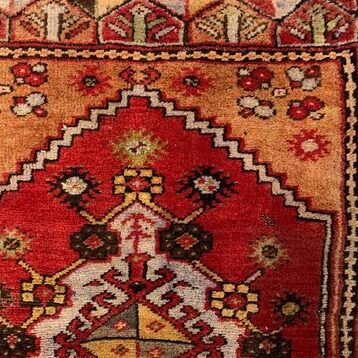
Turkish Rugs
Turkish rugs have a legacy steeped in history and artistry, and have always been a symbol of exquisite craftsmanship and cultural significance.
Carpet Care & Maintenance
Rug Cleaning Mastery and Solutions to Common Damages
Understanding the proper techniques for rug cleaning is essential for maintaining their beauty and longevity. Regular vacuuming is a key step in preventing dust and dirt accumulation. However, deeper cleaning methods, such as steam cleaning or dry cleaning, are necessary for removing stubborn stains and embedded dirt.
Steam cleaning, or hot water extraction, is particularly effective for thorough cleaning and sanitizing.
For delicate rugs, dry cleaning with special powders or solvents is advisable.
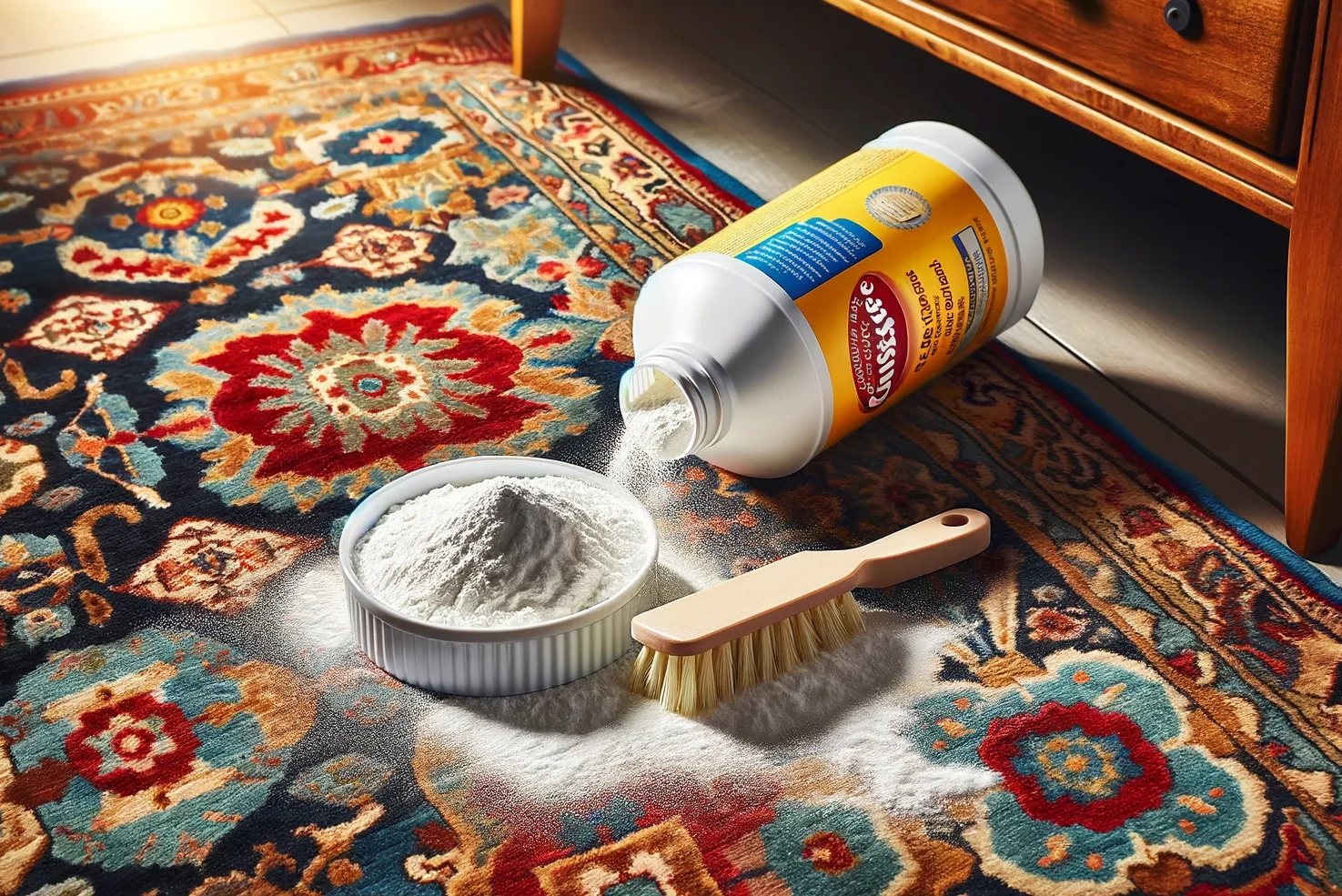
Homemade Flea Treatments for Carpets
Homemade flea treatments for carpets offer a natural and cost-effective alternative to commercial products. Read More →
Frequently Asked Questions
A Tabriz Persian rug is a handwoven rug originating from the city of Tabriz, Iran. These rugs are celebrated for their intricate designs, fine craftsmanship, and cultural significance.
To identify a Tabriz rug, look for characteristics such as an intricate central medallion, elaborate borders, fine knotting, and a rich color palette. These rugs often feature traditional Persian motifs.
Tabriz rugs are considered valuable due to their exceptional craftsmanship, cultural significance, and investment potential. Vintage and antique Tabriz rugs, in particular, can command high prices.
Characteristics of a Tabriz rug include intricate designs, central medallions, detailed borders, fine knotting, and a rich colour palette. Some Tabriz rugs may also feature unique patterns like the "Mahi" or fish design.
Tabriz is a city with a rich cultural heritage and a long history of rug weaving. Tabriz rugs are special because they reflect this heritage, incorporating elements of Persian culture, art, and tradition into their designs.
The value of a Persian rug depends on factors like its age, condition, design, and rarity. Vintage and antique Persian rugs are often more valuable. To assess value accurately, consider consulting a rug expert.
Old Persian rugs, especially those in good condition and with unique designs, can be quite valuable. Antique Persian rugs, in particular, are sought after by collectors and can command high prices.
The value of a Persian rug is subjective and can vary, but antique rugs from renowned weaving regions like Tabriz, Isfahan, and Kashan are often considered among the most valuable due to their craftsmanship and historical significance.



